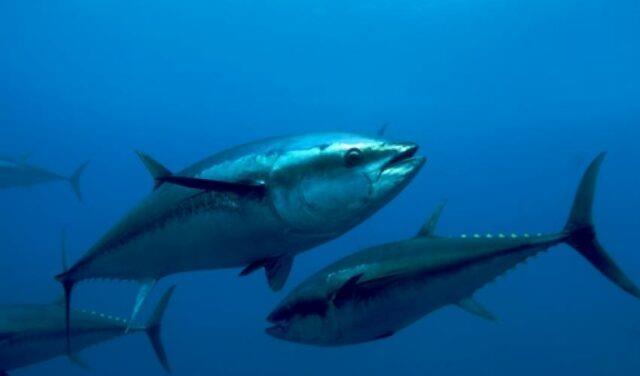(MENAFN- The Costa Rica News) By Guillermo Agudelo September 5, 2021 11 0 Share facebook twitter WhatsApp Linkedin Email
Must Read Environment Guillermo Agudelo - September 5, 2021More than a Third of Shark Species are Under Threat of Extinction, Experts Warn TCRN TCRN STAFF - September 4, 2021“Driving An Electric Bus Is Like Riding In The Clouds”, says Costa Rica's First Female Electric Bus Driver Environment TCRN STAFF - September 4, 2021Costa Rica and Gwec Will Create a Roadmap to Develop Offshore Wind
energy

report this adGuillermo Agudelo I was born in Colombia, I come from humble parents but with good habits and love for God. I had the great opportunity to grow up with a special aunt in my life, she took me to live in Salt Lake City, Utah, USA. I grew up there, I studied at Lehi High and then I started studying at BYU. In the year 2000 I returned to my land and obtained the title of Bachelor in Education Mension integral
37% of all species of sharks and rays are threatened with extinction, announced this Saturday the International Union for Conservation of Nature (IUCN). There are more than 440 known species of sharks in the oceans and a large part is already in critical condition. Some specimens of species stopped being detected years ago.
Threat for sharks and other species

Overfishing, the degradation or disappearance of their natural habitats or climate change is undermining the survival of sharks and rays, explained the IUCN Red List, which since 1964 has classified and monitored the health of the planet's biodiversity. The Red List serves as an alert for the governments responsible for this environmental wealth and as a guide for the non-governmental organizations that defend it.
TIP: Get our latest content by joining our newsletter . Don't miss out on news that matter in Costa Rica. Click here .
The tuna

Another species on the Red List, tuna , offers better prospects. Of the seven most fished tuna species, the stocks of four are increasing. Bluefin tuna went directly from species“endangered” to“least concern”, an improvement of three categories. However, the organization warns that“numerous regional tuna reserves remain scarce.”“These assessments are proof that durable fishing works, with huge long-term benefits,” said Bruce Collette, chairman of the IUCN tuna group.
More species, more danger The IUCN Red List also updated the number of animal and plant species that it has been patiently classifying for more than half a century. Of the 138,374 classified species on the planet, 38,543 are threatened, 28%. The percentage in Latin America is similar.
IUCN scientists have nine categories for the Red List: from species that are safe to those that are totally extinct. However, at the World Conservation Congress in Marseille, conservationists wanted to show signs of hope, with the creation of a new Green Status, the other side of the coin, the success stories to safeguard biodiversity . Its objective will be“to measure the regeneration of species, something that has not been done so far” and to know the impact of conservation programs.
Like the Red List, the Green Status has nine categories. “Preventing extinction is not enough,” Molly Grace, coordinator of the IUCN working group, explained at a press conference. The Green Status starts with 181 species evaluated. The California condor, for example, was classified as“critically endangered” since the 1990s. However, thanks to reintroduction programs for the species and strong protection, it now has 93 adult specimens. Without those efforts, it would have disappeared from the wild, said the expert.
The climate change question The IUCN, which wants to reach the cataloging of at least 160,000 species as soon as possible, updates its list at least twice a year. And the countries where the most threatened species are found know that these notices are like“red cards” to their environmental policy.
“There is a lot of concern that if a species goes down a notch, investments will slow down,” acknowledged Craig Hilton-Taylor, head of the Red List. That is why IUCN Member States now want Green Status to be implemented.
The work of IUCN, which is an organization of scientists rather than activists, is far-reaching. And its structure, with states and non-governmental organizations alike present, in separate colleges, very unusual. Decisions are made by a simple majority in each institution, which means that there must be consensus to approve a recommendation.
Costa Rican present From Latin America only six countries are represented as such: Costa Rica , Ecuador, El Salvador, Mexico, Panama and Peru. But many others have a presence through official environmental agencies.
And since Friday, also through indigenous organizations, which have a voice and vote in the Congress. Of the twenty organizations of indigenous peoples, a fortnight comes from Latin America and the Caribbean.

MENAFN06092021000216011060ID1102747636
Legal Disclaimer:
MENAFN provides the information “as is” without warranty of any kind. We do not accept any responsibility or liability for the accuracy, content, images, videos, licenses, completeness, legality, or reliability of the information contained in this article. If you have any complaints or copyright issues related to this article, kindly contact the provider above.